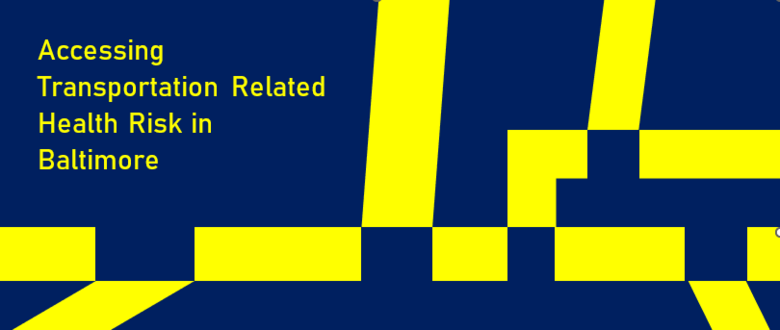- Author:
- Bryan Fuller, Glenn Robinson
- Subject:
- Geography, Social Science
- Material Type:
- Activity/Lab
- Level:
- Community College / Lower Division
- Tags:
- License:
- Creative Commons Attribution
- Language:
- English
- Media Formats:
- Downloadable docs
Assessing Transportation-Related Health Risk in Baltimore Instructors Guide
Assessing Transportation-Related Health Risk in Baltimore with TransCad

Overview
This activity lays a framework for understanding the need for assessing community exposure to public health inequities. The data source section identifies the sources. The methodology section takes the students through the steps of creating a formula to use with the data source types.
Assessing Transportation-Related Health Risk in Baltimore Instructors Guide
This activity will lead students through the steps of caluclating a public health accessibility index using GIS with the TransCad and Maptitude software applications.
This documents contains the instructors guide to the "Assessing Transportation-Related Health Risk in Baltimore " activity.
Contents:
- Information about the scope and content of the activity
- Recommended readings
- Activity Questions
Assessing Transportation-Related Health Risk in Baltimore Activity
Using parcel and network data for Baltimore City students will use TransCAD and Maptitude GIS application software to calculate a public health accessibility index. This tool will help evaluate the general community threat from traffic using graphical mapping that considers the level and proximity of traffic as well as variables related to socio-economic status. Participants will learn how to:
- Use GIS to Develop a public health accessibility index
- Understand gaps in public health access inequities through a transportation lens
- Calculate the distribution of public access inequities at a granular level
- Assess and improve access public health equity and fairness
- Develop a better understanding of transportation and public health inequities using advanced GIS tools
- Create and strengthen a GIS learning environment on HBCU campuses.
- Explore greater opportunities for integrating GSI into schoolwork and future careers.